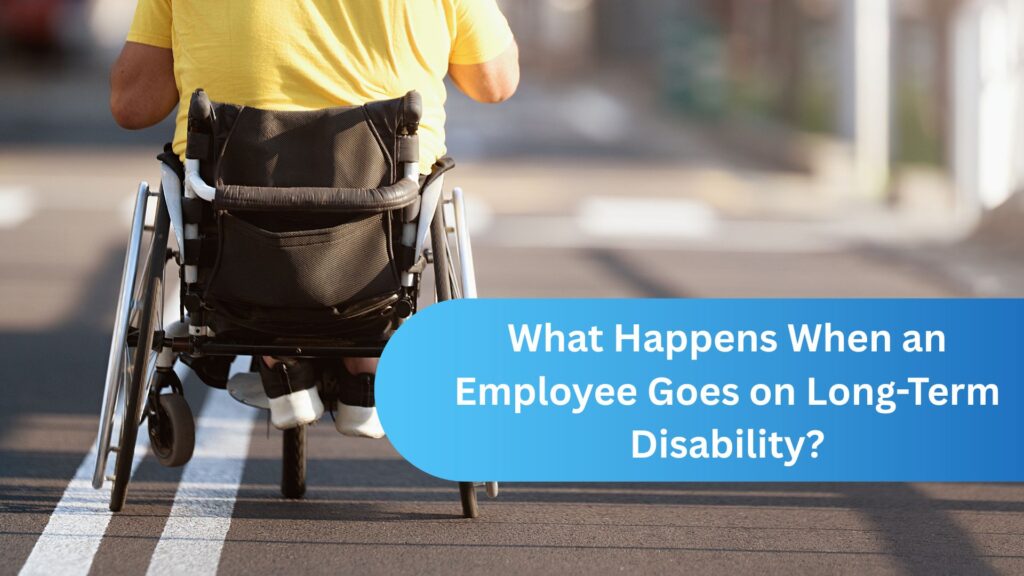What happens when an employee goes on long-term disability?
It’s a question that matters to both workers and employers. Long-term disability (often called LTD) is a benefit that provides income support when an employee cannot work for an extended period due to illness, injury, or a chronic medical condition. Unlike short-term disability, which usually covers absences of a few weeks or months, long-term disability may last for years — sometimes until retirement.
Understanding what long-term disability means is crucial. For employees, it offers financial stability during a difficult time. For employers, it raises questions about job protection, benefits, insurance coverage, and legal obligations under U.S. law.
Between federal protections such as the Family and Medical Leave Act (FMLA) and the Americans with Disabilities Act (ADA), and private disability insurance policies, the process affects everyone involved.
What Is Long-Term Disability?
Long-term disability (LTD) is a type of disability insurance coverage that replaces a portion of an employee’s income when they cannot work due to a serious health condition.
LTD vs. short-term disability: Short-term disability benefits typically cover absences lasting a few weeks to six months. In contrast, long-term disability benefits begin once short-term disability ends and can extend for years, sometimes until retirement age, depending on the policy.
Typical duration: LTD policies generally begin after a waiting period (often 90 to 180 days) and continue until the employee recovers, reaches the maximum benefit period (such as two, five, or ten years), or qualifies for retirement benefits.
Coverage sources: Long-term disability insurance coverage may come from:
-
Employer-sponsored disability insurance plans
-
Individually purchased private LTD insurance
-
Federal programs like Social Security Disability Insurance (SSDI) for those who qualify
In short, the long-term disability definition revolves around financial support that helps employees maintain stability during extended absences from work.
What Happens When an Employee Goes on Long-Term Disability?

When an employee transitions to long-term disability, several factors come into play: employment status, salary replacement, benefits, legal protections, and the process of eventually returning to work. Both the employee and employer must understand their responsibilities to ensure compliance with laws and to support a smoother transition.
Job Protection and Employment Status
One of the first questions employees ask is: Do I keep my job while on long-term disability?
-
FMLA (Family and Medical Leave Act): Provides up to 12 weeks of job-protected leave, but once this period ends, job protection may no longer apply.
-
ADA (Americans with Disabilities Act): May require employers to provide reasonable accommodations to employees who can return to work in some capacity.
-
Employer policies: Some companies hold positions open beyond FMLA, but it is not guaranteed.
-
At-will employment: In many states, employers can terminate employment if the employee cannot perform essential job duties — but they cannot discriminate solely on the basis of disability.
What Happens to the Salary, Benefit, and Insurance Coverages?
While on long-term disability, employees typically receive:
-
Income replacement: Usually 50–70% of their base salary, depending on the insurance plan.
-
Health insurance: Some employers continue coverage; others require employees to transition to COBRA, where the employee pays the premium.
-
Retirement contributions: In most cases, employer contributions to retirement accounts are paused during LTD. Some LTD policies may include provisions to maintain retirement contributions.
What will be the Employer Responsibilities?
Employers have several obligations when an employee goes on long-term disability:
-
Communicating policies clearly: Ensuring the employee understands their LTD benefits, waiting periods, and how to apply.
-
Providing documentation: Employers often supply forms required by insurers or state disability offices.
-
Coordinating with insurance providers: Employers serve as the liaison between the employee and the disability insurance company, confirming salary, job status, and other details.
What are Employee Rights and Legal Protections after a long-term leave?
Employees going on LTD are protected by several U.S. laws:
-
ADA accommodations: Employers must consider reasonable adjustments, such as modified schedules or light-duty work, for employees returning from LTD.
-
State-specific protections: Some states have stronger disability leave laws than federal law.
-
Anti-discrimination protections: Employees cannot be terminated because of their disability. However, employers are not always required to hold a job indefinitely if the employee cannot return.
Returning to Work After Long-Term Disability
Transitioning back to the workplace is often a gradual process.
-
Return-to-work policies: Employers may have structured programs to help employees re-enter the workforce.
-
Reasonable accommodations: Required under ADA if the employee can perform essential job duties with adjustments.
-
Part-time or alternate roles: In some cases, employees may not be able to return to their previous role but can transition into a different or reduced schedule role.
How Long-Term Disability Affects Employers?
When an employee goes on long-term disability, it doesn’t just affect the individual — it also impacts the employer and the broader workplace. Companies must adapt to staffing gaps, financial costs, and shifts in workplace morale.
Staffing Challenges
Employers may face sudden gaps in critical roles when a key employee is on LTD. Depending on the position, this can mean:
-
Hiring temporary staff or contractors.
-
Redistributing work among existing employees.
-
Delays in projects or business operations.
Cost Implications
Long-term disability can increase expenses for employers in several ways:
-
Insurance premiums: If the company sponsors a group disability plan, claims may raise premium costs over time.
-
Overtime and rehiring costs: Employers may need to pay current staff overtime or hire replacements.
-
Training and onboarding: Bringing in new staff or contractors requires additional resources.
Morale and Company Culture
Extended absences can also influence the workplace environment:
-
Colleagues may feel overburdened by extra responsibilities.
-
Team dynamics may shift when a valued employee is absent.
-
On the positive side, supportive handling of LTD cases can boost loyalty and trust in leadership.
How Long-Term Disability Affects Employees?
Employees on LTD face challenges that go beyond health concerns. The transition often has financial, emotional, and career-related consequences. Lets take a look from an employee perspective.
Financial Impact
-
LTD typically replaces only 50–70% of base salary, which can create financial strain.
-
Out-of-pocket costs for ongoing medical care may increase.
-
Loss of employer-sponsored perks (bonuses, retirement contributions, stock options) can add to the burden.
Emotional and Mental Health Considerations
-
Being unable to work long term may lead to feelings of isolation or loss of purpose.
-
Stress about job security and finances can worsen existing health issues.
-
Support networks and counseling services are often crucial during this time.
Career Trajectory and Advancement
-
Extended absence may slow career progression or reduce promotion opportunities.
-
Skills may become outdated if employees are away from work for several years.
-
Some employees transition to different careers or roles upon returning.
Common Questions About Long-Term Disability
Many employees and employers have similar questions when it comes to LTD. Below are answers to the most frequently asked ones — these can also be marked up with FAQ schema to improve SEO visibility.
Does an employee lose their job if they go on long-term disability?
Not always. Job protection under FMLA lasts up to 12 weeks. Beyond that, continued employment depends on company policy, the ADA, and whether the employee can perform essential job duties with or without accommodations.
Can you be fired while on long-term disability?
Yes, but not because of the disability itself. Employers can legally terminate employment if an employee cannot return to work or if the role cannot be reasonably accommodated. Discrimination based on disability is illegal under ADA.
How much of your salary do you get on long-term disability?
Most LTD insurance policies cover 50–70% of base salary. The exact percentage depends on the policy terms and whether the plan is employer-sponsored or private.
Who pays for long-term disability — employer or employee?
It depends. Some employers fully cover LTD insurance premiums, while others offer it as a voluntary benefit employees can purchase. Private LTD policies are also available directly to individuals.
Can you work while receiving long-term disability benefits?
In some cases, yes. Many LTD policies allow employees to work part-time or in a different capacity, but the benefits may be reduced based on additional income. Policies vary, so employees should review their specific plan.
Key Takeaways
-
Long-term disability (LTD) = income replacement plus legal protections. It provides financial stability but usually does not cover an employee’s full salary.
-
For employees: Know your rights, understand your policy, and explore resources such as ADA and SSDI for additional support.
-
For employers: Compliance with disability laws and open communication with employees is essential for maintaining trust and reducing workplace disruption.



